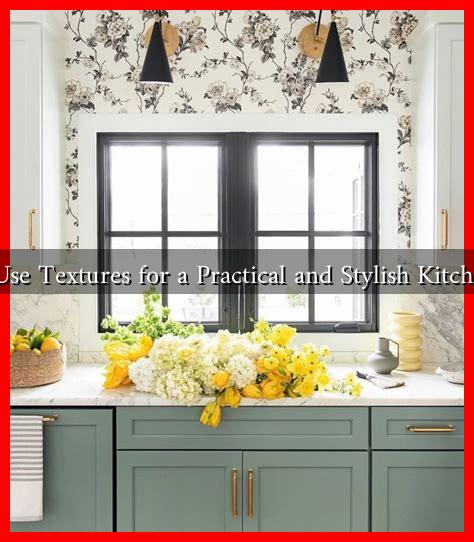-
Table of Contents
How to Use Textures for a Practical and Stylish Kitchen Look
The kitchen is often considered the heart of the home, a space where functionality meets style. One of the most effective ways to enhance both the practicality and aesthetic appeal of your kitchen is through the use of textures. Textures can add depth, warmth, and character to your space, making it not only visually appealing but also more functional. In this article, we will explore how to effectively incorporate textures into your kitchen design.
Understanding the Role of Textures in Kitchen Design
Textures can transform a bland kitchen into a vibrant and inviting space. They can be used to create contrast, highlight specific areas, and even influence the mood of the room. Here are some key roles that textures play in kitchen design:
- Visual Interest: Different textures can create a layered look that draws the eye and keeps the space engaging.
- Functional Benefits: Certain textures can enhance functionality, such as non-slip surfaces or easy-to-clean materials.
- Emotional Impact: Textures can evoke feelings of warmth and comfort, making the kitchen a more inviting space.
Choosing the Right Textures for Your Kitchen
When selecting textures for your kitchen, consider the overall style you want to achieve. Here are some popular textures and how they can be used:
- Wood: Wooden cabinets or countertops can add warmth and a rustic charm. For a modern twist, consider using reclaimed wood for a sustainable option.
- Metal: Stainless steel appliances and fixtures can provide a sleek, contemporary look. Copper accents can add a touch of elegance and sophistication.
- Stone: Natural stone countertops, such as granite or marble, offer durability and a luxurious feel. Textured stone backsplashes can also create a stunning focal point.
- Textiles: Incorporating textiles through curtains, tablecloths, or cushions can soften the hard surfaces in the kitchen and add a cozy touch.
Layering Textures for Maximum Impact
Layering different textures can create a dynamic and visually appealing kitchen. Here are some tips for effectively layering textures:
- Mix Hard and Soft: Combine hard surfaces like metal and stone with softer elements like textiles to create balance.
- Vary Finishes: Use a mix of matte and glossy finishes to add depth. For example, pair a matte wooden table with glossy ceramic dishes.
- Contrast Colors: Use contrasting colors in your textures to make each element stand out. A dark wood cabinet can look stunning against a light stone countertop.
Case Studies: Successful Texture Integration
Many homeowners and designers have successfully integrated textures into their kitchens. Here are a couple of examples:
- Modern Farmhouse: A homeowner transformed their kitchen by using reclaimed wood for the island, paired with white shiplap walls and black metal fixtures. This combination created a warm yet modern farmhouse feel.
- Industrial Chic: A designer used exposed brick walls, stainless steel appliances, and concrete countertops to achieve an industrial look. The mix of rough and smooth textures added depth and interest to the space.
Practical Considerations When Using Textures
While textures can enhance the beauty of your kitchen, it’s essential to consider practicality as well. Here are some factors to keep in mind:
- Maintenance: Choose textures that are easy to clean and maintain, especially in high-traffic areas.
- Durability: Ensure that the materials you select can withstand the wear and tear of a busy kitchen.
- Safety: Consider non-slip textures for flooring and countertops to prevent accidents.
Conclusion
Incorporating textures into your kitchen design can significantly enhance both its functionality and style. By understanding the role of textures, choosing the right materials, and layering them effectively, you can create a kitchen that is not only practical but also visually stunning. Remember to consider maintenance and safety when selecting textures to ensure your kitchen remains a welcoming and efficient space. For more inspiration on kitchen design, check out resources like Houzz or Architectural Digest.

